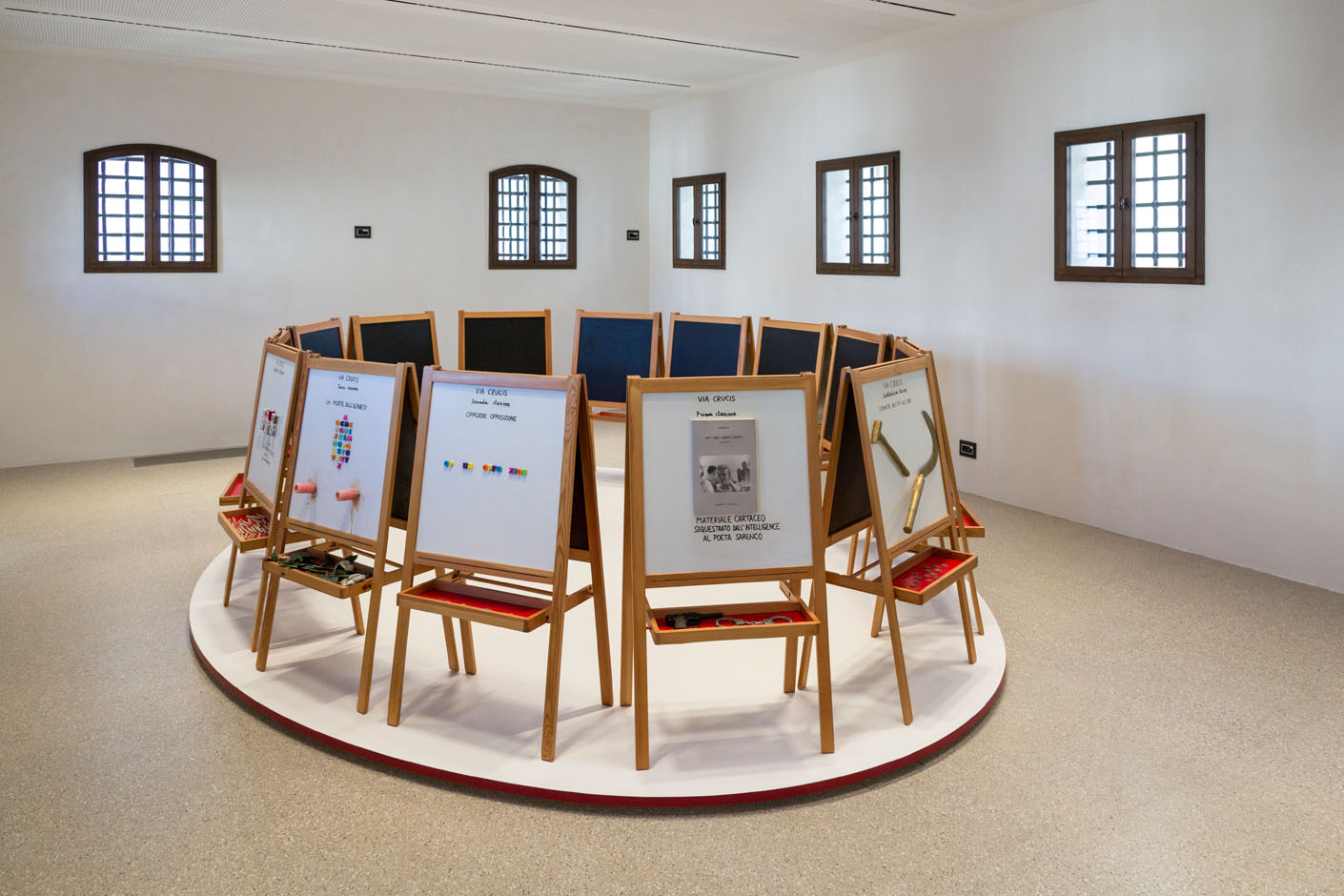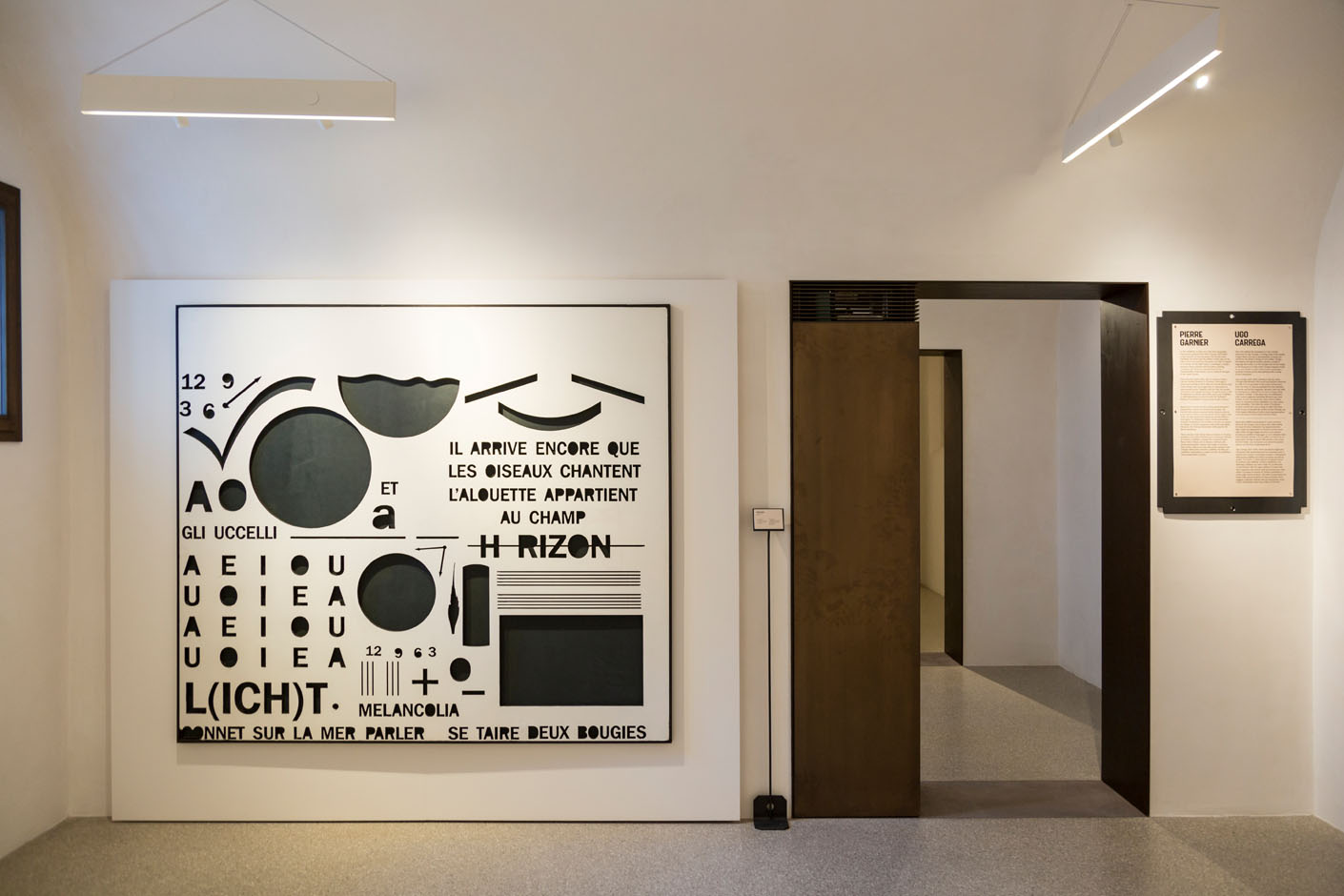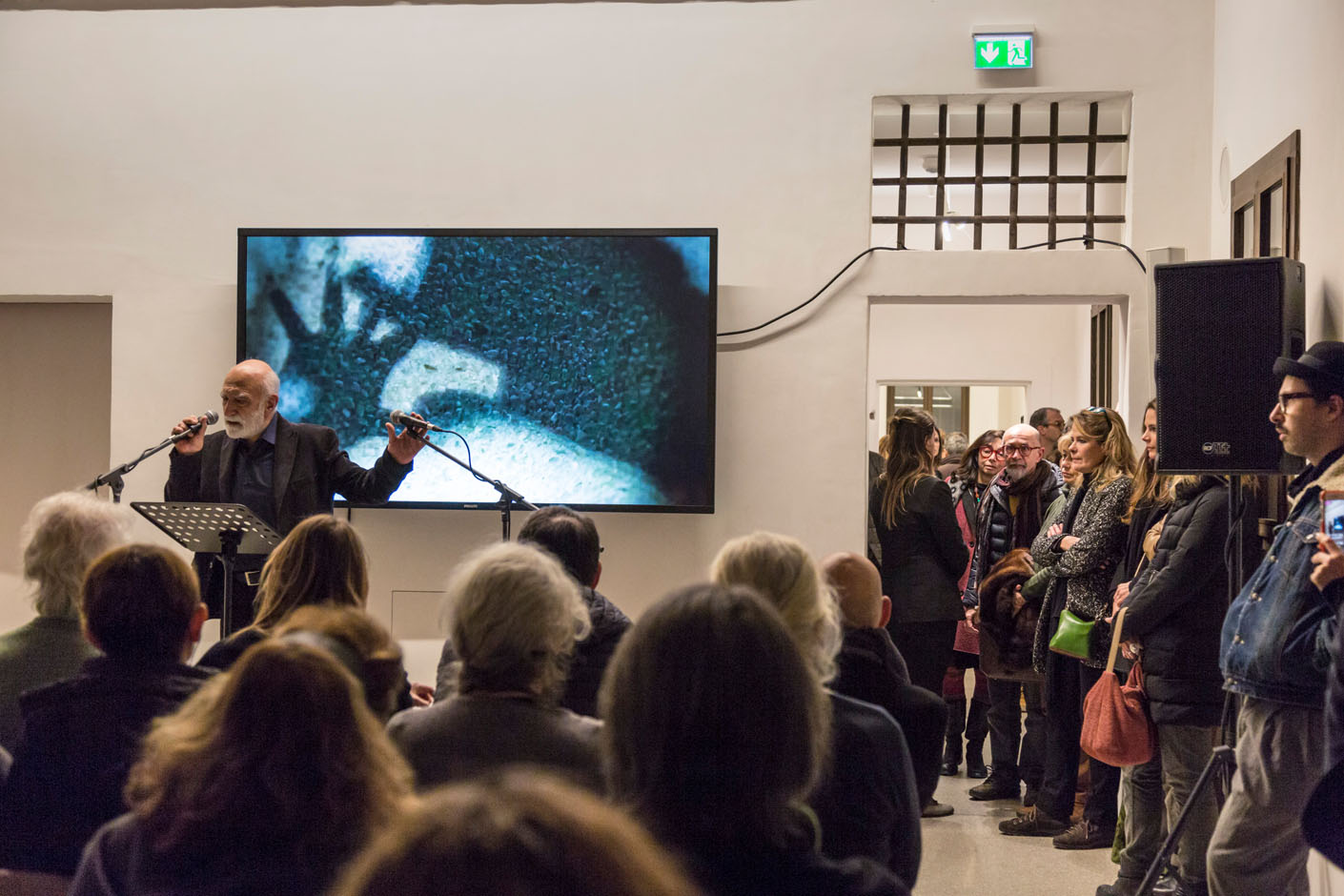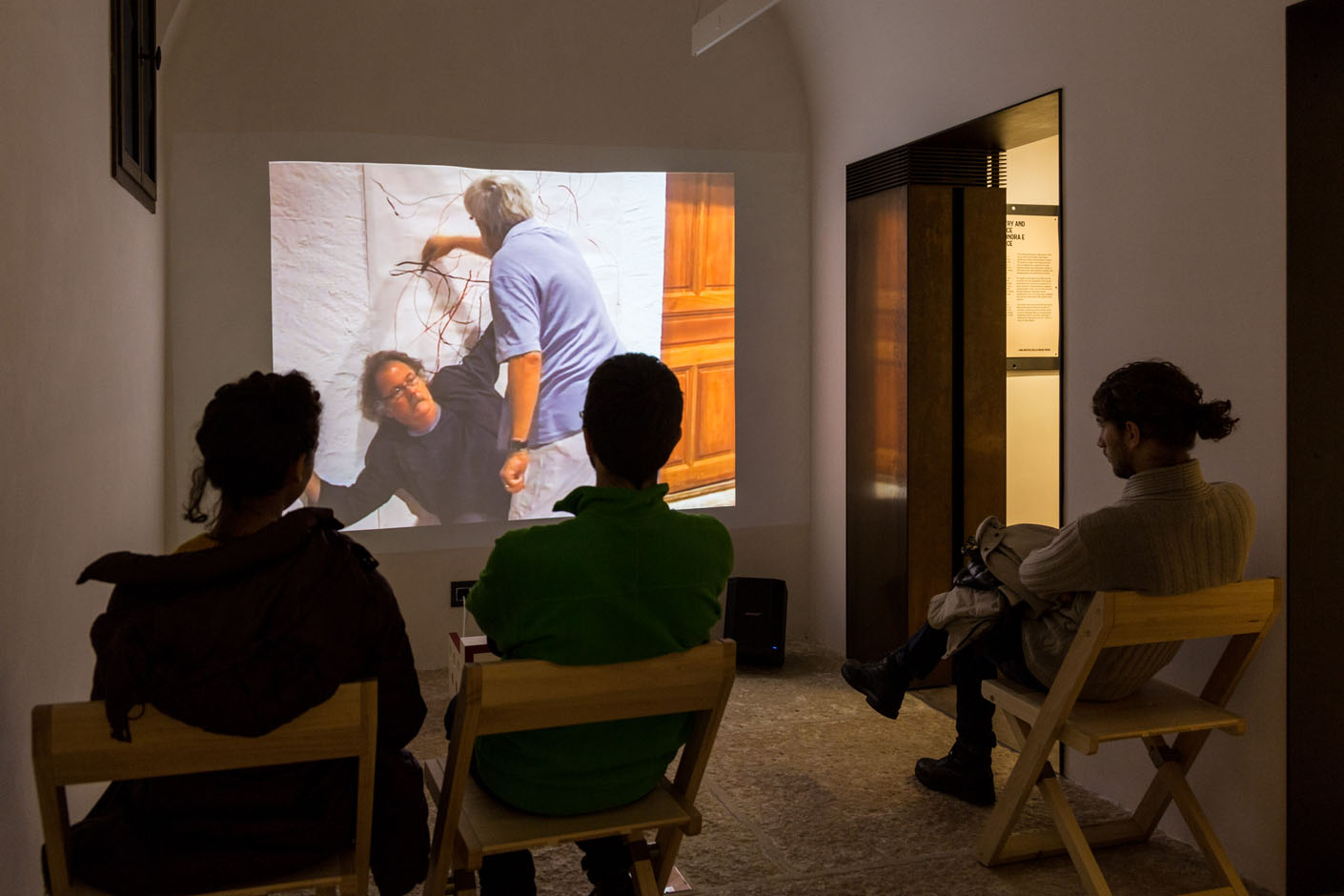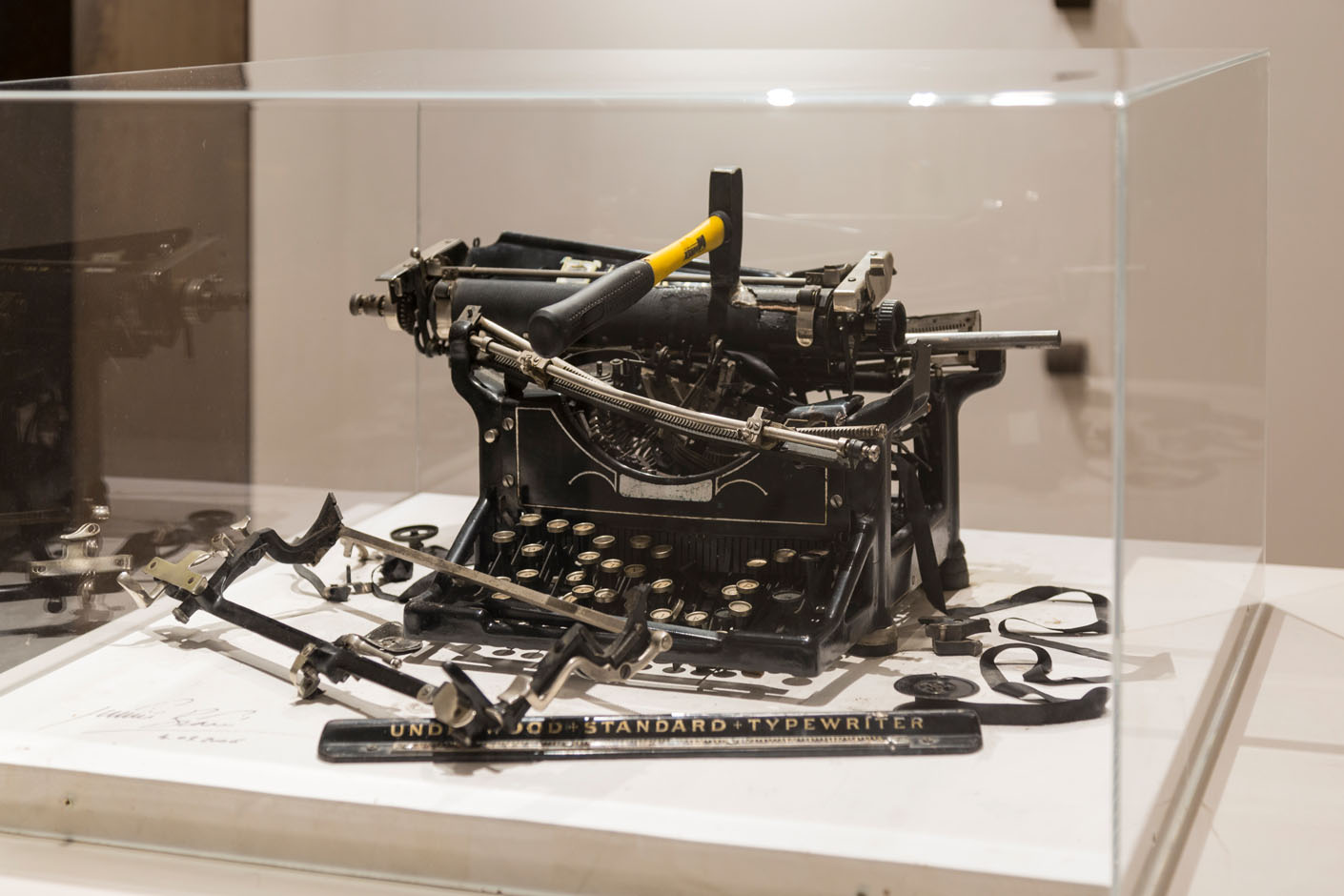Exhibition
Poetic Boom Boom
Poetic Boom Boom, an exhibition on Visual poetry, starts from “Visual Poetry in Europe”, the first Imago Mundi Collection that does not focus on a single nation but on the international vanguardist movement of Visual poetry. Born in the early sixties, the movement was a response to the growing pressure the media exerted on people’s daily life. Visual poets explore the potential of verbal language particularly when it commingles with literature and appropriates the tools of the visual arts.
Curated by
Mattia Solari
Discover more
Imago Mundi Collection
artists
catalogue
The connection between word and image has been explored several times not only in visual culture. The two fundamental references for this path are indeed literary: Un coup de dés n’abolira jamais l’hasard (1897) by Stéphane Mallarmé and the Calligrammes (1917) by Guillaume Apollinaire. Both Mallarmé and Apollinaire broke the traditional graphic constraints, using words with a new freedom. Subsequent developments in the relationship between poetry and the visual arts have been explored by Futurist paroliberismo, dada poetry, and later in the post-war period by Fluxus and the graphic experimentations of Concrete poetry. From these interdisciplinary practices and attention to new communicative formats, Visual poetry was born as an attempt to get rid of the worn out and ineffective literary language, and to try to bridge the gap between artistic-literary expressions and everyday speech.
Poetic Boom Boom brings together these experiences between images to read and words to look at. The exhibition presents the artistic research that made the word and image converse, beginning with artists of the Logomotives group (Eugenio Miccini, Paul De Vree, Julien Blaine, Jean-François Bory, Alain Arias-Misson, Franco Verdi, and Sarenco). Though the exhibition is not limited to historical artworks; more personal and contemporary reading of Visual poetry are exhibited with works by Irma Blank, Mirtha Dermisache, Raffaella della Olga, and Karl Holmqvist.
In the documentary “Poesia in carne e ossa”, we listen to the voices of Julien Blaine, Giovanni Fontana and Sarenco who describe firsthand their relationship to Visual poetry since the sixties, the liberating power of art, and the crossovers in sound poetry and performance.Poetic Boom Boom showcases a journey into a movement that was originally literary, but hybridized with artistic practices and broke through disciplinary boundaries. It reconverts visual codes by intertwining the figurative and the oral/verbal, and disarms the dualisms such as those between text and image, symbol and icon, metonymy and metaphor. Visual poets realize a non-verbalized graphic narrative that continues today with digital culture made of touch-screens, emojis and hybrid languages. These artists and their artworks help us reimagine the role of language and invite people to set them free from the conventions and the rhetorical exploitation of mass media, to follow the path of poetry that, in the words of Sarenco, is “anarchical and revolutionary”.
Inauguration video
DOCUMENTARY "POETRY IN THE FLESH"
The three artists Julien Blaine, Giovanni Fontana and Sarenco tell about their relationship with visual poetry, since the beginnings in the Sixties, and through digressions into sound poetry and performance. The documentary is part of “Poetic Boom Boom” exhibition, dedicated to European Visual Poetry, and exhibited at the Gallerie delle Prigioni, Treviso, from 13 December 2018 to 7 April 2019.
12 December 2018 / 25 April 2019
Gallerie delle Prigioni - Treviso
Curated by
Mattia Solari






















